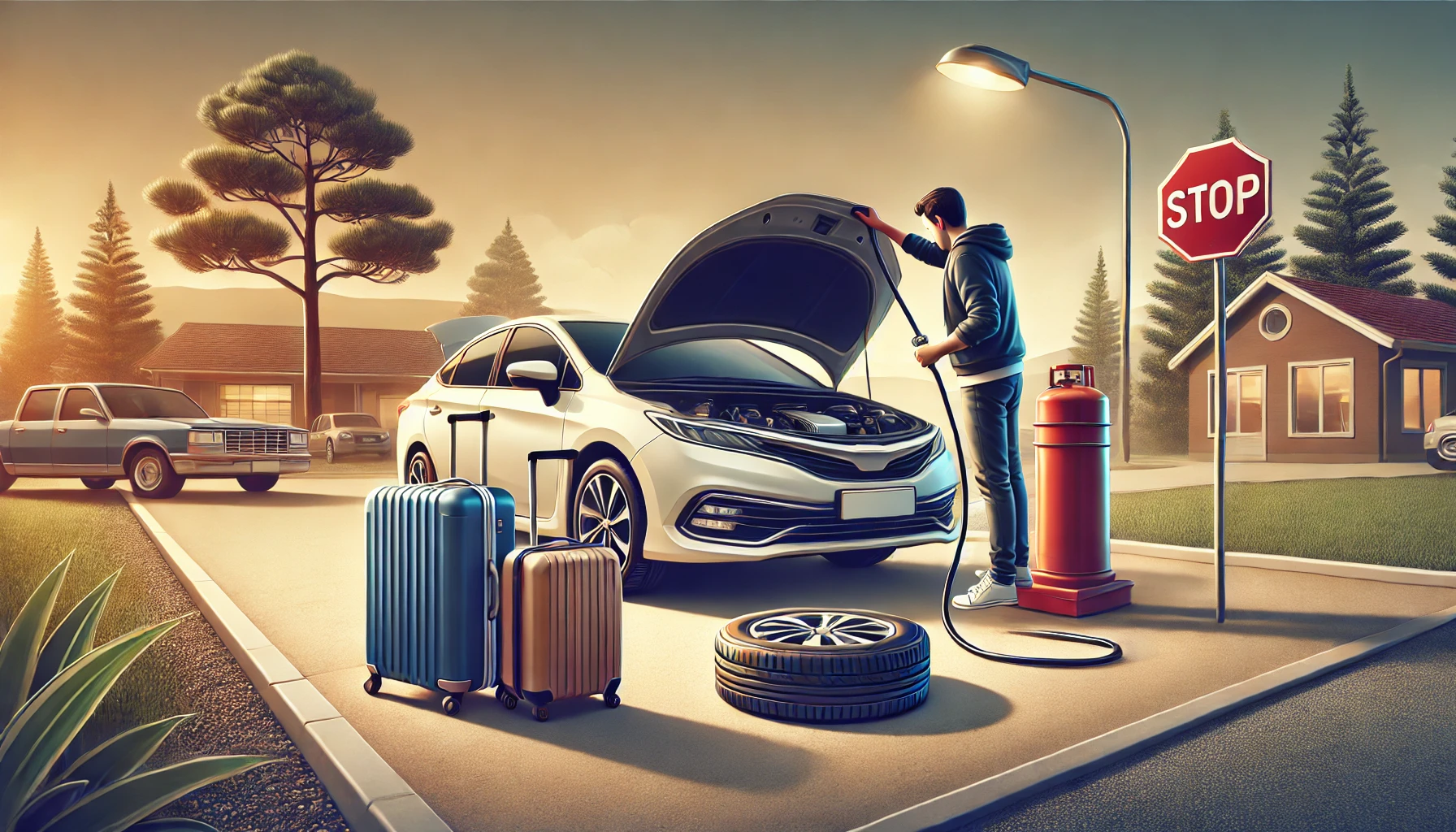With rising fuel prices, many drivers are looking for ways to reduce fuel costs. One popular option is GNV (Natural Gas Vehicle) conversion, which allows a car to run on compressed natural gas (CNG) instead of gasoline or diesel. While GNV systems can offer significant fuel savings, they also come with drawbacks that every car owner should consider before making the switch.
This guide explores the advantages and disadvantages of installing a GNV system, helping you determine whether it’s the right choice for your vehicle.
What Is a GNV System?
A GNV system is a conversion kit that allows a car to run on compressed natural gas (CNG) in addition to gasoline. The system consists of:
- A high-pressure gas tank (usually installed in the trunk)
- Gas injectors that deliver CNG to the engine
- A switching system that allows the driver to switch between gasoline and CNG
GNV is widely used in taxis, ride-share vehicles, and fleet cars because of its lower fuel cost compared to gasoline and diesel.
Pros of Installing a GNV System
1. Significant Fuel Cost Savings
One of the biggest reasons drivers switch to GNV is the lower fuel cost. In many countries, CNG is 30-60% cheaper than gasoline or diesel, allowing for long-term savings.
For example:
- If gasoline costs $5 per gallon, the equivalent amount of CNG may cost $2 to $3.
- A driver who spends $200 per month on gasoline could reduce costs to around $100 to $140 with GNV.
If you drive long distances regularly, a GNV system can help you save thousands of dollars per year.
2. Reduced Environmental Impact
CNG burns cleaner than gasoline and diesel, producing:
- Less carbon dioxide (CO₂)—helps reduce air pollution.
- Fewer nitrogen oxides (NOx)—reduces smog and respiratory health issues.
- Lower particulate emissions—important for urban air quality.
Many cities promote CNG use by offering tax incentives or allowing GNV vehicles to drive in restricted areas.
3. Extended Engine Life
GNV burns cleaner and leaves fewer carbon deposits in the engine, leading to:
- Less wear and tear on engine components.
- Longer intervals between oil changes and spark plug replacements.
- A lower risk of fuel system clogs compared to gasoline.
Many taxi drivers and fleet operators prefer GNV because it helps engines last longer with fewer maintenance issues.
4. Bi-Fuel Capability
Most GNV systems allow you to switch between gasoline and CNG, providing flexibility. This is useful in areas where CNG stations are limited, as you can switch back to gasoline if needed.
5. Government Incentives and Tax Benefits
In some regions, governments offer:
- Tax breaks or rebates for GNV conversions.
- Lower registration fees for CNG vehicles.
- Access to HOV (High-Occupancy Vehicle) lanes to reduce commute time.
Check local regulations to see if your area offers incentives for GNV conversions.
Cons of Installing a GNV System
1. High Initial Installation Cost
Converting a gasoline vehicle to GNV requires a professional installation, which can cost between $1,500 and $5,000, depending on:
- Vehicle model and engine type.
- Quality of the GNV conversion kit.
- Labor costs at the installation center.
While fuel savings can offset this cost over time, it may take 1-3 years to break even, depending on how much you drive.
2. Reduced Trunk Space
The GNV cylinder is large and is typically installed in the trunk, reducing available cargo space. This can be a major downside for:
- Small cars with limited trunk space.
- Drivers who frequently transport large items.
If trunk space is a priority, consider whether you can accommodate the GNV system.
3. Limited Availability of CNG Fuel Stations
Unlike gasoline, CNG is not available at every gas station. This means:
- You may need to plan trips around fuel station locations.
- In some areas, you might have to drive further to refuel.
Check if there are enough CNG stations in your city before installing a GNV system.
4. Potential Power Loss
CNG has a lower energy density than gasoline, which can result in:
- Slightly reduced engine power and acceleration (typically 5-15% power loss).
- Lower fuel efficiency (GNV cars may need more frequent refueling).
However, modern GNV conversion kits have improved performance, and the difference in power is often minimal.
5. More Frequent Tank Inspections
GNV tanks operate under high pressure, requiring:
- Regular safety inspections to prevent leaks or damage.
- Cylinder replacements every 5-10 years, depending on local regulations.
These inspections and replacements add to long-term maintenance costs.
Is a GNV System Right for You?
Best for:
✔️ Drivers who travel long distances regularly and want to save on fuel.
✔️ Urban drivers with easy access to CNG stations.
✔️ Taxi, ride-share, or delivery drivers who want lower operational costs.
✔️ Environmentally conscious drivers looking for a cleaner fuel alternative.
Not ideal for:
❌ Drivers who need maximum trunk space for cargo or travel.
❌ Those who live in areas with few or no CNG stations.
❌ High-performance car owners who prioritize acceleration and power.
❌ Drivers who don’t drive enough to justify the high initial conversion cost.
Final Thoughts
Installing a GNV system can be a great way to reduce fuel costs and environmental impact, but it’s not the right choice for everyone. If you drive frequently and have access to CNG refueling stations, a GNV system could be a worthwhile investment. However, if you rarely drive long distances or need maximum storage space, sticking with gasoline might be the better option.
Before making a decision, research local fuel prices, CNG station availability, and potential government incentives to determine if a GNV conversion makes financial sense for your situation.


